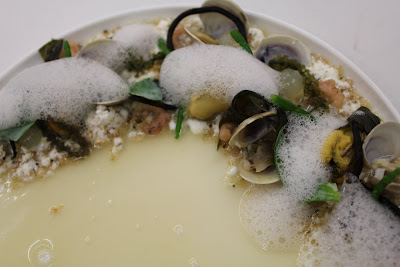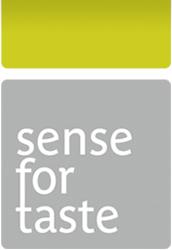Low temperature cooking, is there a difference with sous-vide cooking? Why should we cook some products at low temperature?
Can one compare sous-vide cooking with low temperature cooking? No, both terms are often mixed but they have different meanings. Sous-vide cooking does not always happen at low temperatures.
Sous-vide cooking or “under vacuum” cooking is a technique in which food products are put in a vacuum bag. The bag is then put under vacuum and sealed. The product is usually cooked at temperatures between 90 and 100 ° C
Cooking at low temperatures is mostly done in a vacuum bag like sous-vide cooking, but can also just happen in oil, butter, broth, ... without sous-vide. The temperatures used are below 90 ° C. and take more account of the structure, composition of the product. Cooking at the right temperature might be a better description. Low temperature cooking refers to the temperature of the cooking medium, not to how the food product is placed in that medium. It’s a technique where the cooking temperature is at, or close, to the desired internal temperature of the food product
Cooking of food products.
There are 4 specific reasons for cooking food:
- Cooking promotes the accessibility of some nutrients such as starch in potatoes (starch granules are available for digestive enzymes) and colour pigments. So the food will be more digestible
- The food products become tender, so it is easier to eat. (e.g. connective tissue in meat)
- Cooking eliminates potentially harmful microorganisms and leaches out some toxins.
- Heating food launches a series of chemical reactions, breaking down big, tasteless molecules into small molecules detectable by our taste buds.
When we cook, we usually use heat. The methods are varied and each way has its own impact on the product. The medium in which we heat is also important. (e.g. papilotte, can be cooked in the oven or placed on the barbecue. Inside the food, the reactions are the same; the products will cook in a humid vapor atmosphere).
Apart from stews, most cooking processes occur at high temperatures: 100 ° C for boiling water, 160 ° C or more for frying, 200 ° C in an oven, 250 ° C or more on the plancha, ... All these temperatures are much higher than the temperatures whereupon proteins denature and coagulate with significant effects: dry crust around meat, disintegrated fish tissues,... . As the cooking time proceeds, those effects occur more and more.
The “Roner” and other devices
By scientific studies of the chemical and physical phenomena during cooking of food, we learn to understand the changes food undergoes during cooking: changing of colour and texture, development of flavour and aroma. This knowledge and especially with regard to the behaviour of the proteins, led to the determination of the optimal temperatures that should be achieved in the core of food products. The aim is not only cooking the products, but also retaining its shape, making it soft, tender and give it an excellent flavour.
By technical progress, one is able to make very accurate temperature controlled equipment. With the right equipment, one can achieve cooking circumstances that are consistent and reliable. In the beginning of the nineties, a commercial device was placed into the market allowing us to cook at very controlled temperature, called “Roner”.
The Roner is developed by Joan Roca of the restaurant “El Celler de Can Roca" and Nora Caner of the restaurant "La Fonda Caner", both from the province of Gerona (Cataluña).
The Roner is a water bath with a thermal circulator, ensuring that the water maintains a uniform, controlled temperature. Also, it ensures that we can cook, with precision, sous-vide at lower temperatures (mostly between 38 ° and 85 ° C). Now days there exist a lot more devices than the Roner to cook this way (e.g. Noon pro, Sous Vide Professional of Polyscience,…).
These temperatures are not a coincidence. They depend on the composition of the product (e.g. ratio of muscle tissue and connective tissue, starchy vegetables,...). As said, cooking at the right temperature is a more correct expression After all it refers to the best cooking temperature for the product.
The principle of cooking at low temperature in a vacuum bag is clear. Also important is the accuracy over the entire duration of the cooking process. Water is one of the best media for heat transfers by which the temperature can be adjust with the greatest accuracy to one tenth of a degree. (heats up quickly and the transfer of heat is 23 times faster than in a traditional way e.g. conventional oven), While a steamer is precise, his cooking area does not guarantee total uniformity.
Devices like a Roner are often used in laboratories. These thermostats are immersed in water, therefore called thermostat bath. Elbow of a thermostats are heat pumps providing water circulation. They are equipped with a temperature probe. Thermal bain-maries give a fixed temperature and don’t fluctuate a hundredth of a degree.
The technology of a thermostat bath can also be used without sous-vide. One can cook at low temperature directly in oil or melted butter. These fats do not penetrate into the product because the cooking temperature prevents the release of the cell fluid from the product. The fat sticks on the surface in the form of droplets. During cooking both the product and the fat are in contact with each other, making the fat spoil quickly.
Most food products can be successfully cooked sous-vide at low temperature. Although some ingredients can’t be cooked at low temperature such as: green vegetables, cereals, rice,... . Below a brief overview and their advantages on low temperature, sous-vide cooked products.
- Tender pieces of meat: exact core temperature, uniform cooking and temperature throughout the whole piece
- Hard, tougher pieces of meat can be softened over time and still look pink. Traditionally confit is done in a large amount of fat. By confit made sous-vide, less fat is used and obtains the same result. In both ways you can cook the meat until it falls apart or just simmer it so one can cut it into slices.
- Fish: pure flavour and even cooking. Some textures can’t be obtained on traditional way, such as salmon cooked at low temperature. A less flavoured liquid for a more and better taste can now replace cooking in a broth.
- Other seafood such as lobster, octopus and squid become quickly tough at high temperatures. Low temperature cooking can soften them.
- Hard vegetables: good results in terms of texture and colour (even cooking of potatoes with not to far cooked outsides, carrots are brilliant orange)
- Other vegetables: they are soft without being cooked too far or breaking up
- Fruits: like vegetables. Fruits sensitive of oxidation such as apples and pears retain their colour and gloss
For sous-vide cooked products or dish, we distinguish two methods
- Indirect cooking
- Direct cooking
Direct cooking is applicable in restaurants or at home. It replaces other direct cooking techniques and provides a specific core temperature. For fish we speak of 40 to 50 ° C and 50 to 65 ° C for meat. One can cook at a much higher temperature than the desired core temperature where a core thermometer is essential.
Indirect cooking is a kind of mise-en-place preparation, often for products with a long cooking time, such as collagen rich meat. The indirect cooking is similar to pasteurization.
The students made following dishes, using sous-vide technics
Apple, 9h at 85°C, salted butter caramel, vanilla ice, muscovado sugar foam, crumble of hazelnut
Beef 53°C, broccoli florets, broccoli puree, truffle caramel, triple cooked potato, silver onions, onion croquant
Veal sweetbread, 3h at 62°C, braised chicory, liquorice foam, coffee sauce
Pork loin 58°C, cauliflower (puree, couscous, pickled), stalk of the cauliflower, cream of piccalilli
Cod 53°C, spinach, mussel, mussel juice foam, crispy onion
Pineapple 70°C, vanilla ice, mango cream, bourbon caramel, hazelnut crumble
Pheasant breast 62°C, pumpkin (puree, pickled) truffle, trompette de la mort mushrooms, pecan
Venison 52°C, Jerusalem artichoke (puree, cooked sous-vide in microwave), pear (pickled and fluid gel), chocolate crumble
Filet of hare 51,5°C, parsnip puree, apple (pickled, jelly), black pudding cream
Cod 53°C, chervil root (puree, pickled, cooked sous-vide in microwave) bacon crumble








































